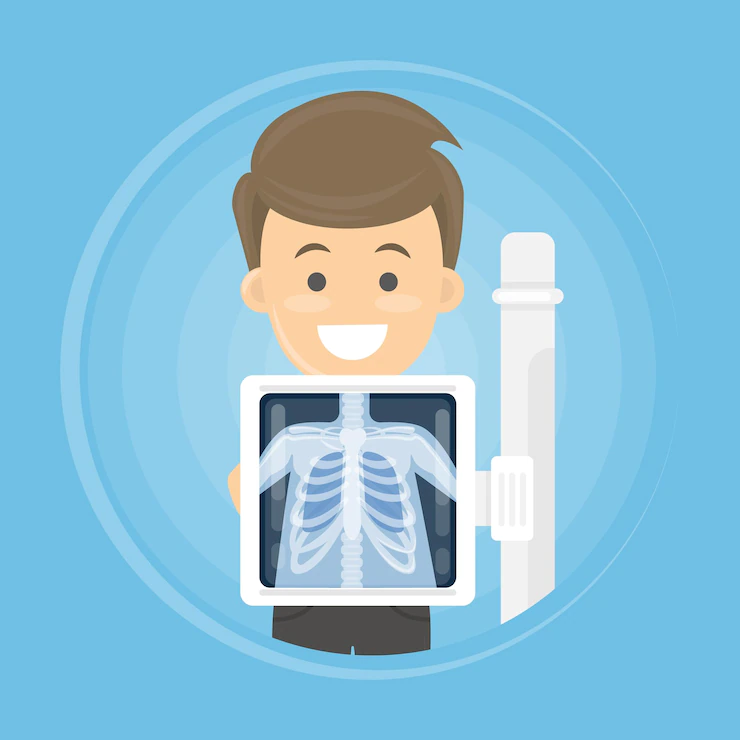The Difference Between Obstetricians & Gynecologists: By A Glendale, Queens Dr.
A specialist in obstetrics, which covers every facet of pregnancy from prenatal care through postpartum care, is an obstetrician. Contrary to gynecologists, obstetricians deliver babies. An obstetrician can also offer fertility medications and other treatments to aid in conception. In the Neonatal Intensive Care Unit, an obstetrician can also offer advice if you give birth to a premature infant (NICU). An obstetrician will make sure that both you and the unborn child are in good health during your pregnancy. In this article a local Glendale, Queens OBGYN will give you the complete guide to everything you need to know about female health in 2022.
Obstetricians are also trained to deal with pregnancy issues like:
- Ectopic pregnancy, in which the fetus develops outside of the uterus
- Signs of Fetal Distress, in which the fetus is not doing well for a number of different causes.
- Problems with the placenta
- Preeclampsia
- Cesarean delivery
An obstetrician can assist you if you need it after giving birth and are struggling with problems like postpartum depression.
GYNECOLOGY
A gynecologist is an expert in looking after a woman’s reproductive health from the start of her first menstruation until post-menopause.
A gynecologist diagnoses and treats any disorders affecting the reproductive system, including those affecting the cervix, uterus, ovaries, fallopian tubes, or vagina. Additionally, gynecologists carry out advised tests such pelvic exams, pap smears, and breast exams. They also carry out tubal ligations and hysterectomies. Additionally, a gynecologist can administer human papillomavirus (HPV) vaccinations to prevent cancer-causing HPV.
In addition to offering advise on reproductive issues, gynecologists can also offer guidance on sexual issues such responsible sexual behavior, contraception, and protection against STDs. Overall, a gynecologist can handle any female reproductive health problem that is unrelated to pregnancy.
To offer patients comprehensive care, many doctors have additional training in both obstetrics and gynecology. They are able to meet the whole range of medical needs of their patients in this way. These doctors are known as OBGYNs.
Gynecological symptoms that may require medical attention
Gynecological symptoms can resemble those of other illnesses. For a diagnosis, consult your healthcare provider at all times.
If you experience any of these signs, consult a doctor:
- Itching, burning, swelling, redness, or soreness in the vaginal area.
- Sores or lumps in the genital area.
- Vaginal discharge with an unpleasant or unusual odor, or of an unusual color. Increased vaginal discharge.
- Abnormal vaginal bleeding.
- Bleeding after menopause.
- Frequent and urgent need to urinate, or a burning sensation during urination. Abnormal vaginal bleeding.
GYNECOLOGICAL DISORDERS AND ISSUES
- Cervical Dysplasia
This is a condition in which the cervix and its surrounding area develop abnormal or precancerous cells. The cervix, which is the lowest portion of the uterus, is where the vagina opens up.
A Pap test can identify cervical dysplasia (pap smear). A biopsy is used to make the diagnosis. Cells can have minor, moderate, or severe abnormal alterations. Cervical dysplasia does not necessarily indicate cervical cancer. But if the cells are left untreated, they could develop into cancer.
Symptoms of Cervical Dysplasia
Most people who have cervical dysplasia or an HPV infection exhibit no symptoms. Usually, symptoms don’t appear until dysplasia develops into cancer. The most effective technique to detect cervical dysplasia before it develops into cancer is routine screening with Pap and HPV testing.
Causes of Cervical Dysplasia
Your cervix’s cells can alter over time. This implies that cervical dysplasia can occur at virtually any age.
The main factor causing cervical dysplasia is HPV. More than 200 distinct HPV viruses exist. 40 of these have an impact on the genitalia. Sexual interaction is one way that the diseases are transferred. Cancer risk is generally low for viruses. Twelve are at high risk. About 70% of instances of cervical cancer are caused by the high-risk HPV strains 16 and 18.
The most prevalent sexually transmitted infection in the US is HPV.
Your chance of developing cervical dysplasia can be affected by a number of variables, including:
- Being sexually active before the age of 18
- Having a lot of sexual partners
- Being ill or taking medications that impair immunity
- Smoking or chewing tobacco
- Not using condoms (although they can help prevent HPV, they can’t completely protect you)
- Giving birth before the age of 16
- Not receiving the HPV vaccine
- Menstrual Disorder
A menstrual disorder is a condition marked by mental and physiological symptoms that revolve around menstruation, usually before or during the period cycle. This could manifest as missed or delayed periods, heavy or light bleeding, excruciating pain, or mood swings.
Over the past few years, menstrual disorders have increased in frequency. Biological, psychological, and environmental components are only a few of the causes of irregular menstruation.
Symptoms of Menstrual Disorders
Menstrual disorders can include:
- Excessive bleeding
- Mood fluctuations, irritability, melancholy, and anxiety
- Pain or cramping before or during periods
- Spotting or very light bleeding
- Feeling bloated
- Longer or shorter menstrual cycle
Causes of Menstrual Disorders
These are main causes of menstrual disorders:
- Using an intrauterine device (IUD)
- Switching birth control methods or using specific medications
- Exercising excessively
- Having polycystic ovary syndrome (PCOS)
- Being pregnant or nursing
- Stress
- Having an overactive (hyperthyroidism) or underactive (hypothyroidism) thyroid gland
- Uterine fibroids
- Uterine lining thickening or polyps
- Pelvic Organ Prolapse
Organs that are prolapsed are those that are drooping or descending. Pelvic organ prolapse is the term used to describe any prolapse or drooping of the pelvic floor organs, such as the:
- Small intestine
- Vagina
- Bladder
- Uterus
- Rectum
Causes of Pelvic Organ Prolapse
Pelvic organ prolapse can occur as a result of anything that causes more strain on the abdomen. Typical causes include
- Childbirth, labor, and pregnancy (the most common causes)
- Obesity
- Respiratory issues accompanied by a persistent, chronic cough
- Constipation
- Cancers of the genitalia
- Uterus removal by surgery (hysterectomy)
Symptoms of Pelvic Organ Prolapse
Others describe the following symptoms along with pelvic organ prolapse, while some women report no symptoms at all:
- Backache in the low back
- Pressure or fullness in the pelvic area
- Painful erections
- The sensation that something is oozing from the vagina
- Urinary issues like urine leakage or a persistent urge to urinate
- Constipation or loss of bowel control
- Spotting or bleeding from the vagina
- Polycystic Ovarian Syndrome (PCOS)
Women who are in their reproductive years are susceptible to developing the hormonal disorder known as polycystic ovarian syndrome, or PCOS. It might have an impact on your capacity to conceive (your doctor will call it your fertility). Additionally, it can cause acne, undesirable body and facial hair, halt your period or make it difficult to estimate when it will come, increase your risk of other health issues including high blood pressure and diabetes, and create acne.
Symptoms of Polycystic Ovarian Syndrome (PCOS)
Missed, irregular, infrequent, or prolonged periods are the most typical PCOS symptoms. Acne, hair growth where it isn’t wanted (like on the face), and hair loss can all be attributed to too much androgen.
Additional signs include:
- Skin tags or darkened skin in the armpits or on the neck
- Mood shifts
- Pelvic pain
- gaining weight around your midsection
Causes of Polycystic Ovarian Syndrome (PCOS)
All of the causes of PCOS in some women are unknown to doctors.
If your sister or mother also has PCOS, you may be at a higher risk of developing it. It may also be associated with issues that cause your body to create excessive amounts of insulin, which may harm your ovaries and impair their capacity to ovulate (or release eggs)
- Uterine Fibroids
Muscular tumors that can develop on your uterus are known as uterine fibroids, which your doctor may also refer to as leiomyomas or myomas. They almost seldom become malignant, and having them does not put you at a higher risk of getting uterine cancer.
Fibroids can vary widely in size, shape, and location. They could show themselves inside your uterus, on its exterior, or in the uterine wall. They might also attach to your uterus with a stalk- or stem-like structure.
Causes of Uterine Fibroids
It is unknown what causes fibroids. Women of reproductive age experience fibroids most frequently. Young ladies without their first period often don’t have them.
Symptoms of Uterine Fibroids
- Excessive or uncomfortable menstrual bleeding (menstruation).
- Bleeding in between cycles.
- Bloating or a lower abdominal fullness sensation.
- Often urinating (this can happen when a fibroid puts pressure on your bladder).
- Agony when having sex.
- Back ache
- Constipation.
- Persistent vaginal leaking
- Inability to urinate or empty your bladder.
- Severe abdominal bloating (enlargement)
Is your gynecologist providing you with the best possible care?
When it comes to women’s health, choosing the right gynecologist in Queens can be difficult. There are many factors to consider when choosing an OBGYN, and you want to ensure that you’re comfortable and well taken care of during your visit(s). Here are some quick tips on what to look for in a good Queens gynecologist. As women, we have unique health needs that require specialized care. That’s why it’s important to find an OBGYN who can provide us with the comprehensive care we need. But with so many options out there, how do you choose the right one?
Here are some things to look for:
1) Is this provider part of my insurance network?
2) Does this provider offer after-hours or weekend appointments?
3) What are their credentials and experience (i.e. residency and board certification)?
4) How close is their office to where I live or work?
5) Is this provider friendly and approachable?
6) Do they follow evidence-based practice guidelines and maintain updated equipment?
7) Can I ask any questions without feeling embarrassed or judged?
If you answered yes to all of these questions, then you’ve found yourself a qualified Queens GYNECOLOGIST (OBGYN).
What should I expect during my first visit?
Your first visit to a gynecologist can be both exciting and nerve-wracking. Here’s what you can expect:
1) A thorough consultation: Your doctor will ask about your medical history, symptoms, and any concerns you may have.
2) A physical exam: This will likely include a pelvic exam, during which the doctor will check for any abnormalities.
3) Pap smear: A Pap smear is a test that screens for cervical cancer. It is recommended that all women over the age of 21 get one every three years.
4) STD testing: If you are sexually active, your doctor may recommend that you get tested for STDs. However, these tests should not replace regular sexual health screenings if you are not currently sexually active.
5) Birth control options: You may be wondering what birth control option would work best for you. Some considerations include effectiveness, cost, convenience, safety and side effects.
6) Other tests or treatments: As part of your visit to a gynecologist, there may also be other tests or treatments suggested depending on the severity of your condition(s). For example, an ultrasound might need to be done if you experience abdominal pain.
Why is some of this stuff so confusing?
You’re not alone if you find some of this information confusing. A lot of it is new and can be hard to understand. The most important thing is that you find a gynecologist who you trust and feel comfortable with. They should be able to answer all of your questions and help you make the best decisions for your health. If they don’t seem like they know what they are talking about, or if they don’t give you enough time, go somewhere else.
What are some things I can do to take care of myself before my appointment?
It’s important to take care of yourself both physically and mentally before your appointment. Here are some things you can do:
- Get enough sleep the night before so you’re well-rested.
- Eat a healthy meal so you’re not feeling faint or nauseous during your appointment.
- Drink plenty of water so you’re well-hydrated.
- Avoid caffeine or other stimulants prior to your appointment as they can make you feel more anxious.
- Take some deep breaths and try to relax; remember that your OBGYN is there to help you and they’ve seen it all before! The most important thing is that you have an open line of communication with them about any questions or concerns you may have about your reproductive health.
EMU OB-GYN Gynecologists Center Queens 8340 Woodhaven Blvd Ste 4 Glendale, NY 11385 (929) 299-6121


